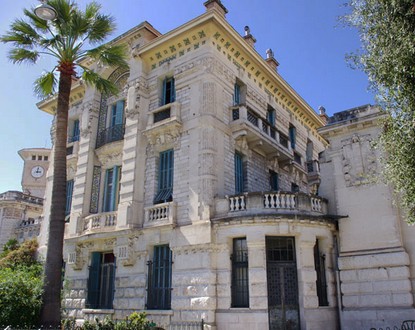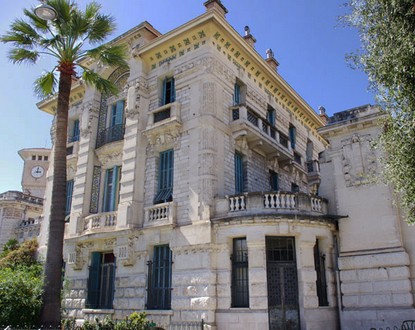This is the wish of the “Alumni” with the support of the PACA region. This status of “historical monument” is a recognition by the Nation of the heritage value of a property.
 If there is a place that epitomizes Nice’s heritage, it is indeed the Lycée Masséna. The classification as a Historical Monument will bring protection, prestige, and additional recognition to the renown of this institution.
If there is a place that epitomizes Nice’s heritage, it is indeed the Lycée Masséna. The classification as a Historical Monument will bring protection, prestige, and additional recognition to the renown of this institution.
The initiative to classify the lycée was started by the Amicable Association of Alumni of Lycée Masséna with the support of the principal, Mr. Brusa.
This process does not aim to classify the entire site since the clock is already listed as a historical monument. It is intended to extend the classification to the rest of the buildings.
The PACA Region will promote this initiative to classify Lycée Masséna as a historical monument and will provide it with full support, as assured by its Vice-President, Patrick Allemand.
Lycée Masséna, newly highlighted by the Promenade du Paillon, finally regains the space and visibility it deserves, as well as its place in the city in the eyes of both the people of Nice and its visitors.
It has housed, generation after generation, those who have marked the history of Nice. And it undoubtedly hosts within it those who will make history tomorrow. A breeding ground for talents, future engineers, researchers, or senior executives, it is permanently at the crossroads of a glorious past and a promising future.
On June 6, 1944, under the olive tree of peace, in front of this lycée, five students and alumni gathered to join the resistance. Arrested by the Gestapo, they became part of the 13 executed at Saint-Julien-du-Verdon on June 11, 1944. At that time, it was called “Lycée Félix Faure.”
In 1963, the “Lycée de garçons de Nice” was officially named “Lycée Masséna” in memory of the active participation of the Marshal of the Empire in the construction of the first lycée in Nice.
A brief historical reminder:
The history of this place is rooted in the history of this city, this county, and this region. Lycée Masséna is primarily a historical patrimony, as this site has been dedicated to Education for 391 years.
Initially an Augustinian convent built in 1623, then a “central school” during the Revolution. It was in 1803 that work began to transform this institution into an “imperial lycée,” which finally opened its doors in 1812. Enduring the vicissitudes of history, it became a “Collegio Convitto Nazionale” in 1848.
It was here that voters were called to vote for the annexation of the County of Nice to France on April 15, 1860. The lycée would then become “imperial” again, and later “national.”
The building:
It is a very specific architecture, perhaps unique. And it is important that those who have the chance to study here, whether for the lycée or the preparatory classes, appreciate this place.
Extremely well-preserved and maintained, the stairs, sculptures, or paintings by Charles Martin-Sauvaigo testify to the richness of this building. The exterior sundial, the ceramics, and the two monuments to the dead also enhance this heritage. The gymnasium is probably unique in France in its design. The sundial and mosaics, extremely well-preserved, complete this remarkable ensemble.



